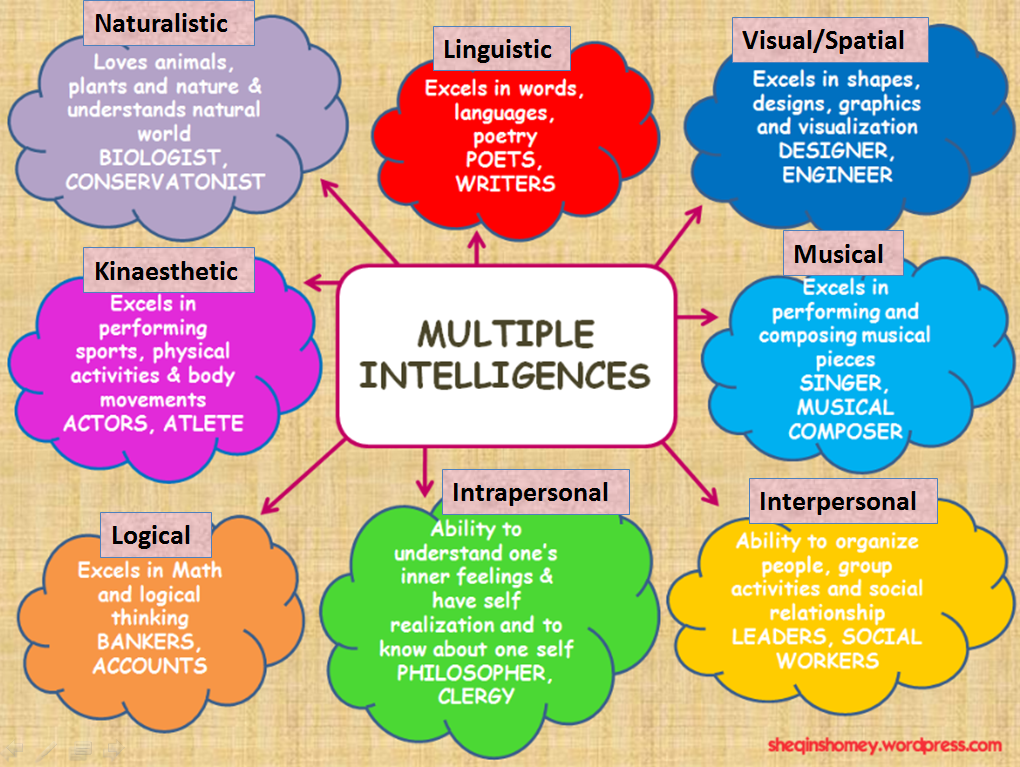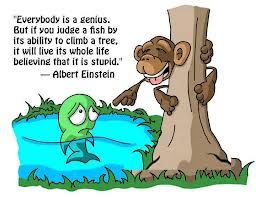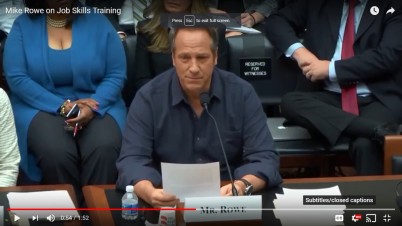Do students learn by doing or by reading? By talking or by listening? YES!
When I was an undergraduate students, some 20+ years ago, I was made aware of a school in Indianapolis, Indiana named The Key School. This school fascinated me because its entire curriculum was based on Howard Gardner’s Theory of Multiple Intelligences. Video explaining Howard Gardner’s Theory of Multiple Intelligences. I loved this concept so much as I have always felt everyone is “intelligent” in their own way.
My college was on a 4-1-4 schedule and so for my 1 month course, I proposed an internship in Indianapolis at The Key School. The proposal was accepted by the Education Department and the Administration and away I went!
I spent time observing all of the rooms but was mainly stationed in the 2nd grade classroom with Kathy Sahm. I was involved in curriculum planning, teaching, and even a meeting with Harvard representatives who came on behalf of Howard Gardner to discuss the multiple intelligence curriculum.
While this school, the teachers, and the students were amazing, there are three things that continue to stick out in my mind, even now, all these years later.
- Students succeed in all subjects when they experience success in one subject every day.
- Students’ backgrounds, economic status, nor home life determine their success.
- Teachers who work together and share together can accomplish great things for their students.
The Key School daily schedule involved students attending a class in each of the 7 areas of Howard Gardner’s Theory of Multiple Intelligences (author note: Gardner has added an 8th intelligence since I visited this school). Students attended music class every day. Students attended physical education class every day. Most schools treat these subjects as “extras” and only provide limited time for students to participate in them so they can have more time on math, science, and writing, for example. What does this schedule and method of teaching say to the student who excels at the piano but struggles to talk, read, or complete addition problems?
In their book, Invent to Learn: Making, Tinkering, and Engineering in the Classroom, authors Sylvia Libow Martinez and Gary Stager express concerns with this same issue.
“The message is clear in many classrooms that there is only one way to approach learning. It’s taken on face value that science is analytical, math is logical, art is creative, and so on. Contemplation is time wasted and there is only one way to solve problems. Children hear these messages loud and clear – ‘This subject isn’t for me,’ or worse, ‘School isn’t for me” (Martinez & Stager, 2013, p. 37).
We must learn to embrace a student’s natural bent, i.e., intelligence, and utilize it to help him/her succeed in school.
Why now am I writing about a school and theory over 20 years old? Because I feel we have lost this basic concept in education. With the restrictions placed on teacher through policies, assessments, and time, teachers are unable to teach to all students. We have become an educational system where teachers are forced to teach to the standardized tests to survive and to channel students to college. We have become a culture so focused on technological advancements we have forgotten about the students who God created to do other vital functions in our society. Click on video to play.
As I continue in my MED program, this burning desire placed in my heart over 20 years ago has been rekindled. How can I connect with each student who’s nautral intelligence is…[one of the 8 intelligences defined by Gardner]? I do not have an answer but l appreciate you journeying with me as I wrestle with this notion and see what God has in store for me!
Next week, we will talk about my second point, Students’ backgrounds, economic status, nor home life determine their success.
References:
8 Intelligences – Theory of Multiple Intelligences Explained – Dr. Howard Gardner.(2016, April 02). Retrieved from https://www.youtube.com/watch?v=s2EdujrM0vA&t=3s
Checkley, K. (1997, September). An update on the key school. Retrievedfrom http://www.ascd.org/publications/classroom-leadership/sept1997/An-Update-on-the-Key-School.aspx
Pearson, D. (2018, February 02). Teaching fish to climb trees. Retrieved from https://theyorkshiredad.com/teaching-fish-to-climb-trees
Martinez, S. L., & Stager, G. (2013). Invent to learn making, tinkering, and
engineering in the classroom. Torrance: Constructing modern knowledge press.
Multiple intelligences in my mind. (2013, October 30). Retrieved from https://peltjournal.wordpress.com/2013/08/22/multiple-intelligences/



An interesting discussion is worth comment. There’s no doubt that
that you should write more on this subject, it might not be
a taboo subject but usually folks don’t speak about these topics.
To the next! Kind regards!!
LikeLike